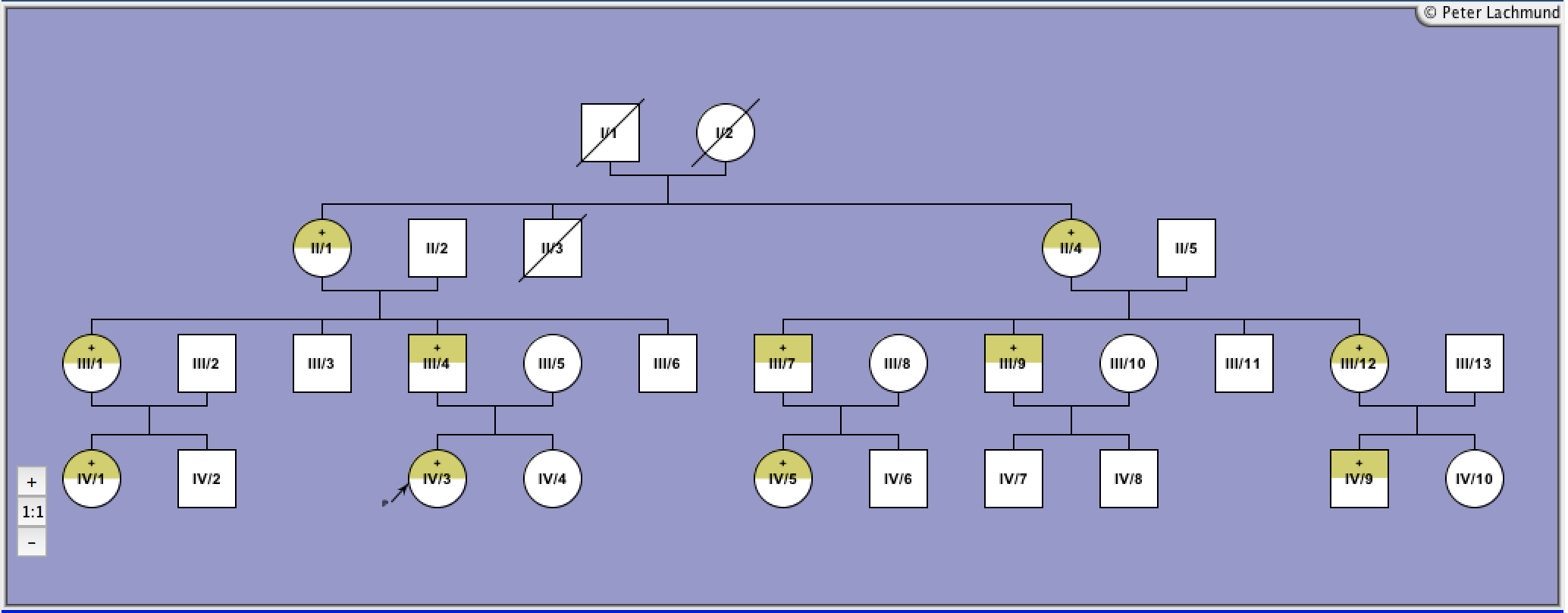Details Of Published TSH Receptor Mutation
Ile 691 Phe
c.2071A>TConstitutively Activating TSH Receptor Mutation
Type
gain
Manifestation
family
Exon
10
Legend:

Male

Female

Unknown

Deceased
+
Mutation
-
No Mutation

Hyperthyroidism
(Heterozygous)
(Heterozygous)

Goiter

Relapse
P
Index Patient
Molecular Characteristics:
No constitutive activity.
Clinical Features:
diagnosis:
IV/3: 2yr
III/4, III/12, IV/3, IV/5, IV/9 diagnosed in childhood
IV/3: 2yr
III/4, III/12, IV/3, IV/5, IV/9 diagnosed in childhood
Treatment:
not documented
Functional Characteristics:
cAMP
(basal)
(basal)
cAMP
(TSH)
(TSH)
IP
(basal)
(basal)
IP
(TSH)
(TSH)
TSH-Binding
Cell Surface Expression
Prevalence
LRA
Ref
0.8
0.7
1.1
0.9
0.9
1
0.7±0.1
2
Legend:
cAMP (basal): basal in vitro cAMP production of mutant over wild-type TSHR
cAMP (TSH): maximal in vitro cAMP production of mutant over wild-type TSHR
IP (basal): basal in vitro IP production of mutant over wild-type TSHR
IP (TSH): maximal in vitro IP production of mutant over wild-type TSHR
TSH-binding: maximal TSH-binding compared to the wild-type TSHR
Cell surface expression: cell surface expression of mutant compared to WT-TSHR
LRA: linear regression analysis (LRA) of constitutive activity as a function of TSHR expression determined by 125I-bTSH binding or FACS analysis compared to the wild-type TSHR
Prevalence: Prevalence of (somatic and germline) activating mutations*
Ref: Reference for functional characterization
Child: Found in children.
Reference 1:
Liu et al.
J Hum Genet. 53:475-8
A novel TSHR gene mutation (Ile691Phe) in a Chinese family causing autosomal dominant non-autoimmune hyperthyroidism.
2008
Reference 2:
Jäschke et al.
Clin Endocrinol (Oxf) 73:815-20
Lack of in vitro constitutive activity for four previously reported TSH receptor mutations identified in patients with nonautoimmune hyperthyroidism and hot thyroid carcinomas
2010

